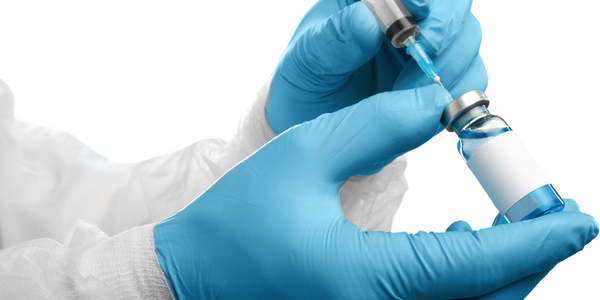Automating pharmaceutical and medical research equipment design with SolidWorks software
Customer Company Size
Large Corporate
Region
- America
Country
- United States
Product
- SolidWorks 3D CAD
- SolidWorks Professional
- SolidWorks PDM
- SolidWorks eDrawings
Tech Stack
- 3D CAD
- Product Data Management (PDM)
- Design Communication Software
Implementation Scale
- Departmental Deployment
Impact Metrics
- Customer Satisfaction
- Innovation Output
- Productivity Improvements
Technology Category
- Application Infrastructure & Middleware - Data Exchange & Integration
- Application Infrastructure & Middleware - Data Visualization
- Functional Applications - Product Lifecycle Management Systems (PLM)
Applicable Industries
- Life Sciences
- Pharmaceuticals
Applicable Functions
- Product Research & Development
- Quality Assurance
Services
- Software Design & Engineering Services
- System Integration
About The Customer
Bristol-Myers Squibb (BMS) Company is a leading global pharmaceutical company known for its extensive and active pharmaceutical and medical research programs. BMS scientists conduct research studies and experiments across the entire scope of medical research, aiming to discover new drug therapies for various medical conditions, including cancer, high blood pressure, diabetes, and HIV/AIDS. The company often requires highly specialized, custom-designed equipment for its distinctive research, which is developed by the Discovery Automation Group. This group is responsible for designing and building any equipment that cannot be commercially bought, ensuring that the research remains on track and meets the unique needs of BMS scientists.
The Challenge
Bristol-Myers Squibb (BMS) Company, a leading global pharmaceutical company, faced challenges in designing and building highly specialized, custom-designed equipment for their distinctive research needs. The Discovery Automation Group, responsible for creating equipment that could not be commercially bought, initially used 2D design software and later switched to a 3D parametric CAD package in the 1990s. However, they found the parametric 3D design system to be inefficient, difficult to learn, and costly. In 2000, the group initiated an evaluation of other 3D CAD systems to find a more suitable solution that would be easier to use, more intuitive, and affordable.
The Solution
After evaluating several leading 3D CAD systems, BMS selected SolidWorks® 3D CAD software for equipment development. The Discovery Automation Group chose SolidWorks software because it was the easiest to use, the most intuitive, and represented the best value. The implementation of six seats of SolidWorks software allowed the group to shorten its design cycles by 75 percent while simultaneously improving equipment quality. The group also upgraded to the SolidWorks Professional suite to benefit from SolidWorks product data management (PDM) software, which replaced their manual documentation system with a more efficient electronic system. This upgrade established a more secure system for managing design data and improving revision control. Additionally, the group gained access to SolidWorks eDrawings® design communication software, enhancing interaction between the engineers and BMS research scientists. This software allowed for easier communication and review of design concepts, making the process more efficient and user-friendly for non-engineers.
Operational Impact
Quantitative Benefit

Case Study missing?
Start adding your own!
Register with your work email and create a new case study profile for your business.
Related Case Studies.

Case Study
Case Study: Pfizer
Pfizer’s high-performance computing software and systems for worldwide research and development support large-scale data analysis, research projects, clinical analytics, and modeling. Pfizer’s computing services are used across the spectrum of research and development efforts, from the deep biological understanding of disease to the design of safe, efficacious therapeutic agents.

Case Study
Fusion Middleware Integration on Cloud for Pharma Major
Customer wanted a real-time, seamless, cloud based integration between the existing on premise and cloud based application using SOA technology on Oracle Fusion Middleware Platform, a Contingent Worker Solution to collect, track, manage and report information for on-boarding, maintenance and off-boarding of contingent workers using a streamlined and Integrated business process, and streamlining of integration to the back-end systems and multiple SaaS applications.

Case Study
Process Control System Support
In many automated production facilities, changes are made to SIMATIC PCS 7 projects on a daily basis, with individual processes often optimised by multiple workers due to shift changes. Documentation is key here, as this keeps workers informed about why a change was made. Furthermore, SIMATIC PCS 7 installations are generally used in locations where documentation is required for audits and certification. The ability to track changes between two software projects is not only an invaluable aid during shift changes, but also when searching for errors or optimising a PCS 7 installation. Every change made to the system is labour-intensive and time-consuming. Moreover, there is also the risk that errors may occur. If a change is saved in the project, then the old version is lost unless a backup copy was created in advance. If no backup was created, it will no longer be possible to return to the previous state if and when programming errors occur. Each backup denotes a version used by the SIMATIC PCS 7 system to operate an installation. To correctly interpret a version, information is required on WHO changed WHAT, WHERE, WHEN and WHY: - Who created the version/who is responsible for the version? - Who released the version? - What was changed in the version i.e. in which block or module of the SIMATIC PCS 7 installation were the changes made? - When was the version created? Is this the latest version or is there a more recent version? - Why were the changes made to the version? If they are part of a regular maintenance cycle, then is the aim to fix an error or to improve production processes? - Is this particular version also the version currently being used in production? The fact that SIMATIC PCS 7 projects use extremely large quantities of data complicates the situation even further, and it can take a long time to load and save information as a result. Without a sustainable strategy for operating a SIMATIC PCS 7 installation, searching for the right software version can become extremely time-consuming and the installation may run inefficiently as a result.

Case Study
Drug Maker Takes the Right Prescription
China Pharm decided to build a cloud-based platform to support the requirements of IT planning for the next five to ten years which includes a dynamic and scalable mail resource pool platform. The platform needed to have the following functions: all nodes support redundancy, ensuring service continuity and good user experience, simple and easy-to-use user interfaces for end users and administrators and good compatibility and supports smooth capacity expansion.

Case Study
ELI LILLY ADOPTS MICROMEDIA’S ALERT NOTIFICATION SYSTEM
Pharmaceutical production is subject to a strict set of enforced rules that must be adhered to and compliance to these standards is critically necessary. Due to the efforts of WIN 911’s strategic partner Micromedia, Lilly was able to adopt an alarm notification infrastructure that integrated smoothly with their existing workflows and emergency hardware and protocols. These raw energy sources enable the industrial process to function: electricity, WIN-911 Software | 4020 South Industrial Drive, Suite 120 | Austin, TX 78744 USA industrial steam, iced water, air mixtures of varying quality. Refrigeration towers, boilers and wastewater are monitored by ALERT. Eli Lilly identified 15000 potential variables, but limitations compelled them to chisel the variable list down to 300. This allowed all major alarms to be covered including pressure, discharge, quantity of waste water discharged,temperature, carbon dioxide content, oxygen & sulphur content, and the water’s pH.



